Chega de Saudade (1958) and the origins of Bossa Nova
________________________
page originally published on 4 October 2011; latest edit: 18 November 2020
________________________
Tereza da praia (Tom Jobim and Billy Blanco)
Lúcio Alves & Dick Farney, 1954(?). The recording belongs in a class of pre-Bossa Nova music called sambas-canções.
.
(below) a later live performance by the pair
.
What is Bossa Nova?
Citing Dicionário Cravo Albin da Música Popular Brasileir, Wikipedia offers the following brief summary in the New beat in the 1950s: the Bossa Nova section of its Samba page:
A movement was born in the southern area of Rio de Janeiro, strongly influenced by jazz, marking [?] the history of samba and Brazilian popular music in the 1950s. The bossa nova emerged at the end of that decade, with an original rhythmic accent which divided the phrasing of the samba and added influences of impressionist music and jazz and a different style of singing which was both intimate and gentle. After precursors such as Johnny Alf, João Donato, and musicians like Luis Bonfá and Garoto, this sub-genre was inaugurated by João Gilberto, Tom Jobim, and Vinicius de Moraes. It then had a generation of disciples and followers including Carlos Lyra, Roberto Menescal, Durval Ferreira, and groups like Tamba Trio, Bossa 3, Zimbo Trio, and The Cariocas.[1]
On the origins and history of Samba:
- Wikipedia
- Samba @ Great Brazilian Music
- The Origins of Samba, by Tijana Ilich @ ThoughtCo.
_____________________
Tom Jobim describes bossa nova — as quoted at the blog Jazz Profiles:
During a 1962 Tom Jobim interview conducted by Gene Lees at the songwriter’s home, the artist spoke on the difference between samba music and bossa nova, saying:
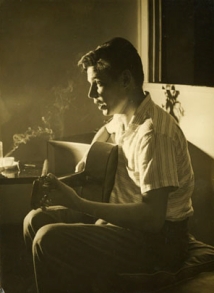 The authentic Negro samba in Brazil is very primitive. They use maybe ten percussion instruments and four or five singers. They shout and the music is very hot and wonderful.
The authentic Negro samba in Brazil is very primitive. They use maybe ten percussion instruments and four or five singers. They shout and the music is very hot and wonderful.
But bossa nova is cool and contained. It tells the story, trying to be simple and serious and lyrical. João [Gilberto] and I felt that Brazilian music had been too much a storm on the sea, and we wanted to calm it down for the recording studio. You could call bossa nova a clean, washed samba, without loss of the momentum. We don’t want to lose important things. We have the problem of how to write and not lose the swing.
In a 1995 profile of Jobim published in the year following his death, Bob Blumenthal quoted the artist as follows from a 1987 interview:
Our affinity for jazz was part of the problem, and it has come to dominate many people’s thinking about our music. Instead of going into history as a branch of samba, which it is, bossa nova is viewed by the world as a branch of jazz…Of course, anything that swings today is called jazz, the term has become so encompassing.
______________
from Coisa Mais Linda: Histórias e Casos da Bossa Nova, a 2005 documentary film directed by Paulo Thiago, starring Johnny Alf, Leny Andrade, Billy Blanco, Ronaldo Boscoli
(opening five minutes, with English subtitles)
.
(below) During a 1973(?) MPB TV Especial, Nara Leão talks about the beginnings of Bossa Nova and sings a bit of the song “Insensatez” (m. Tom Jobim, w. Vinícius de Moraes), first recorded by João Gilberto, 1961.
.
 João Gilberto is considered by many to be the originator of the movement known as bossa nova. A new style of guitar playing he developed during periods of relative seclusion between 1955 and 1956, combined with an unusually soft vocal style, without vibrato and deliberately singing ahead of or behind the beat, which he adopted around the same time created a music that was captivating and seemed to unveil a sea of uncharted territory. This new music proved incredibly seductive, ultimately leading to a worldwide bossa nova craze. Daniella Thompson, an architectural historian, writer, lecturer, and photographer with a special interest in the music and culture of Brazil, endorses the view that Gilberto “invented” bossa nova in her profile Plain João: The Man Who Invented Bossa Nova (originally published in an issue of Brazzil magazine, dated May 1998). We’ll quote from it later.
João Gilberto is considered by many to be the originator of the movement known as bossa nova. A new style of guitar playing he developed during periods of relative seclusion between 1955 and 1956, combined with an unusually soft vocal style, without vibrato and deliberately singing ahead of or behind the beat, which he adopted around the same time created a music that was captivating and seemed to unveil a sea of uncharted territory. This new music proved incredibly seductive, ultimately leading to a worldwide bossa nova craze. Daniella Thompson, an architectural historian, writer, lecturer, and photographer with a special interest in the music and culture of Brazil, endorses the view that Gilberto “invented” bossa nova in her profile Plain João: The Man Who Invented Bossa Nova (originally published in an issue of Brazzil magazine, dated May 1998). We’ll quote from it later.
Thompson recounts how Gilberto developed his unique performance style in the years 1955-56 in the midst of a series of stays away from Rio de Janeiro: seven months with a friend in Porto Alegre, eight months at his sister’s home in Diamantina (a historic mining town), and finally a period at his parent’s home in Jauzeiro, the last interrupted by a brief residence in a psychiatric sanatorium in Salvador where his father had him committed, believing João’s erratic behavior and strange singing style to be signs of mental disturbance. It was during his time in Diamantina, suggests Thompson, that he discovered how to modulate his voice to achieve desired effects without the use of vibrato. After he found the bathroom of the house to be perfectly suitable to his acoustic experiments, says Thompson, he spent countless hours there, day and night, honing his new style.
 When Gilberto finally returned to Rio in late 1956 he quickly renewed acquaintances. Thompson says that the most important of these was Tom Jobim, now a “full-fledged composer” who held important positions, arranging and producing, at the British-owned record label Odeon.
When Gilberto finally returned to Rio in late 1956 he quickly renewed acquaintances. Thompson says that the most important of these was Tom Jobim, now a “full-fledged composer” who held important positions, arranging and producing, at the British-owned record label Odeon.
Thompson describes what happened when Gilberto played two new compositions for Jobim:
When João played “Bim-Bom” and “Hô-Ba-La-Lá” for Tom, the latter was impressed not so much with the singing as with the guitar.
He immediately recognized the possibilities inherent in the beat: it simplified the rhythm of samba and allowed a lot of room for modern harmonies of the kind Tom was creating. Looking over his compositions to see how he could work the new rhythm into them, he found a song he had written with Vinicius de Moraes at least a year earlier. The song was “Chega de Saudade.”
_____________________
Early Career
By the time he was eighteen (c. 1949), João had moved to Salvador, the capital of the state in which he’d grown up. He intended to try to make it as a radio singer. While he didn’t succeed in this venture he was heard by a member of the vocal group Garotos da Lua, who sang on Radio Tupi in Rio de Janeiro. The new artistic director of the station, Antônio Maria, disliked the singing style of the group’s lead, Jonas Silva. Maria complained that Silva sang too quietly and forced the rest of the group to whisper. The group was threatened with cancellation of their contract unless they replaced the lead. Gilberto became Silva’s replacement.
In her Gilberto profile, Plain João, Thompson writes:
 At the time, João Gilberto sounded like a hybrid between Lúcio Alves and Orlando Silva. The Garotos da Lua figured they were getting the best of both worlds and cabled him to come to Rio. It’s interesting to note that nine years later, João would revolutionize popular singing with the same low-pitched, whispering, vibrato-less style for which Jonas Silva had lost his job to João.
At the time, João Gilberto sounded like a hybrid between Lúcio Alves and Orlando Silva. The Garotos da Lua figured they were getting the best of both worlds and cabled him to come to Rio. It’s interesting to note that nine years later, João would revolutionize popular singing with the same low-pitched, whispering, vibrato-less style for which Jonas Silva had lost his job to João.
Rio de Janeiro
In 1950, at the age of nineteen, João Gilberto arrived in the capital. From his very first days in Rio, it was eminently clear to his group-mates that their new crooner harbored aspirations for a solo career. To make things worse, his behavior wasn’t altogether professional. On more than one occasion, he was late for shows or simply didn’t appear at all. The Garotos da Lua began to prepare for surviving without him. A year after his arrival, João was fired from the group for one absence too many, but he remained their friend and even continued to share an apartment with several of them. [read more]
[A summary, from the Wikipedia profile, of the decade in Gilberto’s career following his dismissal from Os Garotas da Lua, sketching the path leading up to his ascent as the first star of the bossa nova movement, is appended as a footnote to this page.]*
_______________________________
Chega de Saudade (m. Antonio Carlos Jobim, w. Vinícius de Moraes)
From Daniella Thompson’s Gilberto profile Plain João: The Man Who Invented Bossa Nova:
“Chega de Saudade” is universally acknowledged as the song that launched both the bossa nova movement and João Gilberto’s career. It’s his signature piece. But João was not the first singer to record “Chega de Saudade.” That distinction belongs to Elizeth Cardoso, a highly respected singer’s singer who never sold vast quantities of records. The recording came about because Tom Jobim and Vinicius de Moraes had the opportunity to make a limited-edition (2,000 copies), non-profit album of their songs in 1958. The disc was called Canção do Amor Demais…
João wasn’t the second artist to record “Chega de Saudade” either. His friends, the vocal group Os Cariocas, recorded it before him, and because their guitarist Badeco couldn’t duplicate João’s beat, João volunteered to sit in on the recording and play anonymously. Twice now he’d accompanied other singers on a recording of “Chega de Saudade.” It looked as if the song that was tailor-made for him was slipping away.
.
___________________________
 In 1958, the LP Canção do Amor Demais was released featuring vocal interpretations by the renowned Brazilian singer and actress Elizete Cardoso. Daniella Thompson suggests that other than for the fact that João Gilberto’s new style of playing guitar was featured on two songs, the album would be forgotten today.
In 1958, the LP Canção do Amor Demais was released featuring vocal interpretations by the renowned Brazilian singer and actress Elizete Cardoso. Daniella Thompson suggests that other than for the fact that João Gilberto’s new style of playing guitar was featured on two songs, the album would be forgotten today.
She also notes that Gilberto tried to influence the way Cardoso sang:
While Elizete Cardoso was learning the songs, João showed her how to delay and advance a chord’s rhythm the way he thought “Chega de Saudade” should be sung, but Elizeth would have none of it and let him know she could do without his advice. She sang the song the conventional way. Only João’s guitar hinted at what was to come.
The album notably consists entirely of songs written by either Antonio Carlos Jobim and Vinicius de Moraes together or by one of them alone. It is sometimes referred to as the first bossa nova album.
Tom Jobim was the musical director, arranger, and played piano. Although Chega de Saudade was the first track on the album, it was an interpretation by Gilberto, released as a single in July 1958 which became a hit in Brazil, the first bossa nova hit recording.
_________________________
Earliest recordings of Chega de Saudade following Elizete Cardoso’s:
Os Cariocas com Severino Filho e sua Orquestra – 1958
.
João Gilberto – 1958
.
Some later covers of Chega de Saudade:
Antonio Carlos Jobim – from the 1963 LP The Composer Plays
.
Nara Leão — from her 1971 album Dez anos depois
.
Gary Burton – vibraphone solo — Copenhagen, October 1968
__________________
João Gilberto and daughter Bebel Gilberto – performing live in concert at the Teatro Fênix, Rio de Janeiro, for the TV series Grandes Nomes (TV Globo) air date: 5 September 1980
.
João Gilberto and Bebel Gilberto — Roma, 1983
.
Tom Jobim — Montreal Jazz Festival at Place des Arts, 1986
Antônio Carlos Jobim – piano, vocal
Jaques Morelenbaum – violoncelo
Paulo Jobim – guitar
Danilo Caymmi – flute, vocal
Sebastião Neto – bass
Paulo Braga – drums
Ana & Elizabeth Jobim, Simone Caymmi, Maúcha Adnet, Paula Morelenbaum – vocals
______________________________
No More Blues — English lyric by Jessie Cavanaugh and Jon Carl Hendricks
Dizzy Gillespie — from the 1962 live album Dizzy on the French Riviera
- Lalo Schifrin – piano
- Dizzy Gillespie – trumpet, vocals
- Leo Wright – flute, alto saxophone, vocals
- Elek Bacsik – guitar
- Chris White – double bass
- Rudy Collins – drums
- Pepito Riestria – percussion
_______________________________________
On different views of the origins of Bossa Nova:
What about the earlier work of the Laurindo Almeida Quartet? It’s samba and jazz combined, but does it have any relationship to bossa bova? Was it, as some claim, a major influence on the development of bossa nova? I’m basically going to take a pass on these questions for now. Let the experts fight it out. I don’t have enough information to make a judgment one way or the other. But I have ears and cannot deny obvious similarities between some of the recordings of the Laurindo Almeida Quartet as early as 1953, the Byrd and Getz Jazz Samba recordings of the 1962, and others soon to follow. Frankly, I was startled to learn that Laurindo Almeida Quartet’s recording of Ary Barroso’s Inquietação (video below) was recorded in 1953. It strongly resembles parts of Byrd and Getz’s “groundbreaking” Jazz Samba of 1962.
Some maintain that the real birth of bossa nova occurred years prior to João Gilberto’s isolated creation of a unique performing style beginning sometime in 1955 or 1956. One of the alternate stories posits the genesis of the style at least eight years earlier, on the US West Coast. I’ll provide a few examples of the arguments of this camp.
 During sessions from 15-22 April 1953 (dates from a review at AllMusic.com) the Laurindo Almeida Quartet recorded the tracks for two 10-inch discs, called The Laurindo Almeida Quartet, Vol.1 and Vol. 2 which were later combined and re-released as Brazilliance, Vol. 1. The music included experimental blends of jazz and Brazilian music. Harry Babasin and Almeida had begun their experiments several years earlier. According to a comment, by Von Babasin, on a book review at allaboutjazz.com (Bossa Nova: The Story of the Brazilian Music That Seduced the World, by Ruy Castro):
During sessions from 15-22 April 1953 (dates from a review at AllMusic.com) the Laurindo Almeida Quartet recorded the tracks for two 10-inch discs, called The Laurindo Almeida Quartet, Vol.1 and Vol. 2 which were later combined and re-released as Brazilliance, Vol. 1. The music included experimental blends of jazz and Brazilian music. Harry Babasin and Almeida had begun their experiments several years earlier. According to a comment, by Von Babasin, on a book review at allaboutjazz.com (Bossa Nova: The Story of the Brazilian Music That Seduced the World, by Ruy Castro):
The earliest forms of Bossa Nova came about when Hollywood bassist, Harry Babasin, and Brazilian guitarist, Laurindo Almeida, met on the set of the movie, A Song Is Born, in 1947. They immediately hit it off and started fusing Brazilian folk songs and modern jazz. They eventually formed the Laurindo Almeida Quartet, adding Bud Shank on alto sax and Roy Harte on drums. They played around town and recorded two 10″ LPs for Richard Bok of Pacific Jazz in 1953. Many jazz historians consider this the true birth of Bossa Nova and that it was the “brainchild of bassist Harry Babasin”, quoted from ‘The True Story of the Bossa Nova’, Downbeat Magazine, 1962, by John Tynan.
More than one commenter (on the allaboutjazz.com piece) objects to this revision of history:
David Manson says:
Well… there are numerous mythologies describing how U.S. jazz musicians created Bossa Nova. At least in this story, one of the two is a Brazilian.
Almir Chediak’s wonderful Songbook series (published by Lumiar Editora) gives a convincing look at the evolution of Bossa Nova. Besides the obvious contributions of Joao Gilberto and Tom Jobim, one has to credit the early influences of Custodio Mesquita, Norival Teixeira, [Johnny] Alf and others.
___________________
(below) In an article by Marc Myers at Jazz Wax (jazzwax.com) the author comments upon the genesis of the fusion developed by Babasin and Almeida, citing a John Tynan article from the November 8, 1962, issue of Down Beat magazine called “The Real Story of the Bossa Nova”:
Harry and Laurindo [pictured]…would play between takes of the film and experiment with Laurindo’s traditional Brazilian baiao rhythms. As they maintained their relationship over the years, they found themselves developing the idea in 1952. Almeida was quoted as saying, “The idea of putting samba and jazz together was different. As long as samba is 2/4 and jazz is a la breve, why not put the two together?”
maintained their relationship over the years, they found themselves developing the idea in 1952. Almeida was quoted as saying, “The idea of putting samba and jazz together was different. As long as samba is 2/4 and jazz is a la breve, why not put the two together?”
___________________
Bud Shank, in a 2008 Jazz Wax interview (Bud Shank: Bossa Nova (Part 1), strongly conveys his opinion that West Coast Jazz combined with the variant samba rhythms played by a new generation of Brazilians who looked beyond traditional forms for inspiration, particularly toward American jazz, was instrumental in the development of the music that became known as bossa nova. Though some aspects of his argument may depend too heavily upon personal opinion rather than objective fact, or at least upon difficult to prove connections, he does put forth what might be a verifiable claim that a specific “chord cadence” had been borrowed from West Coast Jazz by Brazilians beginning in the early 1950s following their exposure to West Coast Jazz of the time. He mentions, by way of examples, Gerry Mulligan, Chet Baker, Paul Desmond, Dave Brubeck as primary and direct influences, saying:
The Brazilians wrote new songs with folk melodies, but unlike the old ones, they were using our chord cadence called 2-7, 5-7, 1—something all West Coast musicians were married to at the time.
At one point the interviewer offers a simple equation:
JW: Samba plus West Coast Jazz equals bossa nova?
BS: Yes. Between what the Brazilians were doing, compositionally, and the whole feel, it was West Coast jazz and “cool.”
Just prior to this Shank is asked how he knew that his albums with Laurindo Almeida and other West Coast jazz albums produced a direct influence on Brazilian music of the 1950s. Shank replies that on a visit to Rio de Janeiro in 1965, he was told so personally by Tom Jobim. It’s not clear that Jobim indicated a direct influence on bossa nova, specifically, in an exchange with Shank.
Almeida and Shank got together again in 1958 and 1959 to record the material for two additional 10-inch discs (originally released as Holiday in Brazil, and Latin Contrasts, which were later combined and re-released as the 12 inch disc Brazilliance, Vol. 2) featuring music that blended Brazilian samba and jazz. Shank’s admits that even these later albums were not yet Bossa Nova, and claims that the band wasn’t aware of what was going on in the Brazilian music scene at this time (“We had nothing from Brazil to listen to.”):
JazzWax: Four years after your first Brazilian-themed recordings with Laurindo Almeida, Harry Babasin and Roy Harte, you recorded two more in 1958 and 1959. Can we call these the first bossa nova jazz albums?
Bud Shank: In all fairness, you really can’t categorize what we did on those dates as “bossa nova.” The rhythm section was wrong. The basis wasn’t there yet.
JW: What was the difference between the 1953 recording and the 1958 and 1959 recordings?
BS: Nothing, really. We had nothing from Brazil to listen to. It was more of the same, just a little more modern. We were bringing our own sound and marrying it to the Brazilian rhythm.
He then goes on to explain that these later albums were “part of the development which influenced Rio,” and that Rio in turn influenced Charlie Byrd and Stan Getz. This might be a bit easier to swallow than the Samba + West Coast Jazz = Bossa Nova equation he gives the nod to elsewhere (later) in the interview. Here he seems to be saying only that the 1959 discs were part of the developments in West Coast Jazz which influenced developments in some Brasilian music, including Bossa Nova. And that Byrd and Getz reaped benefits from developments on both sides.
Meanwhile, Gilberto was by 1957 already a sensation in the musical circles of Rio’s Zona Sul playing both his own compositions and other songs in his new bossa nova style.
____________________________________
Laurindo Almeida Quartet
Inquietação (Ary Barroso) — A track from Brazilliance, Vol. 1, recorded in 1953 — Bud Shank (alto sax), Laurindo Almeida (guitar), Harry Babasin (bass), Roy Harte (drums).
A review at AvaxHome says, in part:
In 1953, the West Coast studio reedman Bud Shank created a first by going into the studio with the Brazilian master guitarist Laurindo Almeida. A good eight years before Stan Getz conducted a similar experiment called JAZZ SAMBA (with non-Brazilian guitarist Charlie Byrd), Shank and Almeida produced a natural-born musical hybrid that still sounds startlingly contemporary today. There aren’t too many 1953 jazz albums about which one could make the same claim.
_____________________________
Excerpt from an article by Ben Ratliff published in the New York Times, 15 June 2008:
Ruy Castro’s authoritative history of bossa nova was published here [in the US] in 2000 as “Bossa Nova: The Story of the Brazilian Music That Seduced the World.” Naturally, its Brazilian title was “Chega de Saudade,” and naturally, a portrait of Mr. Gilberto was its centerpiece. Mr. Castro recently surprised me by contradicting the “50 Years of Bossa Nova” claim: he has come to believe, he said in a recent conversation, that bossa nova always existed.
Well, in a way. There have been eerily soft-voiced singers since the earliest microphone technology, Mr. Castro said — Whispering Jack Smith, Joe Mooney, Matt Dennis, Chet Baker. That bossa nova came to be defined by Mr. Gilberto, he contended, was an accident of timing and circumstance; Mr. Gilberto was one of many musicians trying to figure out different ways to turn Brazilian popular music inside out.
________________________
* From the Wikipedia profile of João Gilberto: a summary of the decade in Gilberto’s career after his dismissal from Os Garotas da Lua, following the trail leading up to his ascent several years later as the originator and leading star of the Bossa Nova movement —
For seven years, Gilberto’s career was at a low ebb. He rarely had any work, was dependent on his friends for living quarters, and fell into chronic depression. Eventually, in 1955 he was rescued from this rut by Luiz Telles, leader of the vocal group Quitandinha Serenaders, who took him to Porto Alegre in southern Brazil. In this provincial town João Gilberto blossomed musically. Next he spent eight months with his sister in Minas Gerais, where he sequestered himself and played day and night, forging a personal style for voice and guitar that would come to be known as bossa nova. The first bossa nova song, titled “Bim-Bom”, was written as Gilberto watched passing laundresses on the banks of the São Francisco River balance loads of clothes on their heads.
Just after this time Gilberto’s father, upset by João’s bizarre singing style and refusal to take “normal” work, committed him to a mental hospital. In a psychological interview there, Gilberto stared out the window and remarked, “Look at the wind depilating the trees.” The psychologist replied, “But trees have no hair, João,” to which Gilberto responded, “And there are people who have no poetry.” He was released after a week. The next year (1956) he returned to Rio and struck up old acquaintances, most significantly Antonio Carlos Jobim, who was by then working as a composer, producer and arranger with Odeon Records. Jobim was impressed with Gilberto’s new style of guitar playing, and set about finding a suitable song to pitch the style to Odeon management.
Bossa nova (“new style”) is a refined version of samba, de-emphasizing the percussive aspect of its rhythm and enriching the melodic and harmonic content. Rather than relying on the traditional Afro-Brazilian percussive instruments, João Gilberto often eschews all accompaniment except his guitar, which he uses as a percussive as well as a harmonic instrument, incorporating the parts of different samba percussion instruments such as the tamborim and the surdo from a full batucada band. The singing style he developed is almost whispering, economical, and without vibrato. He creates his tempo tensions by singing ahead or behind the beat.
This style, which Gilberto introduced in 1957, created a sensation in the musical circles of Rio’s Zona Sul, and many young guitarists sought to imitate it. It was first heard on record in 1958 in a recording of “Chega de Saudade”, a song by Jobim and Vinicius de Moraes. Gilberto had first accompanied singer Elizeth Cardoso as her guitarist in a recording of this song, explaining his vision for the new style, but Cardoso would have none of his singing advice and sung it in the standard way. But shortly after this recording, João Gilberto made his own debut single of the same song, in the new style, followed by the 1959 LP, Chega de Saudade. The song turned into a hit, launching Gilberto’s career and the bossa nova craze. Besides a number of Jobim compositions, the album featured older sambas and popular songs from the 1940s and ’50s, all performed in Gilberto’s distinctive style. This album was followed by two more in 1960 and 1961, by which time the singer featured new songs by a younger generation of performer/composers such as Carlos Lyra and Roberto Menescal.
________________________
Reference not cited in the text:










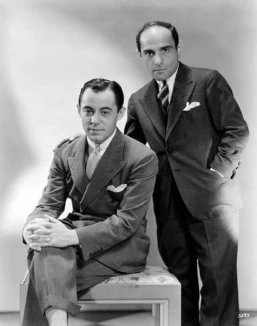

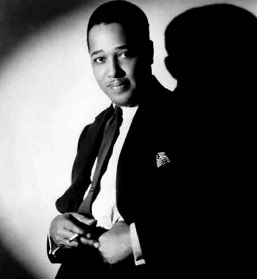


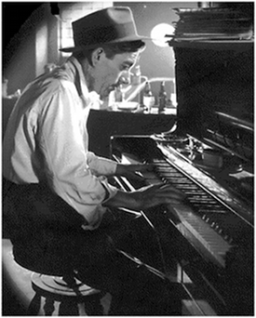
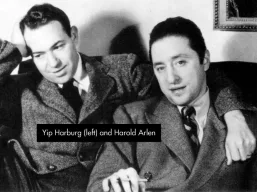




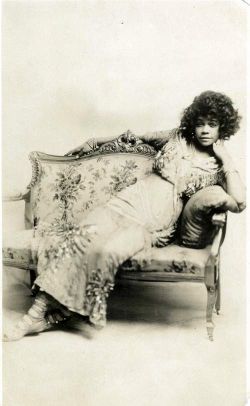










Mar 29, 2020 @ 18:25:17
LikeLike